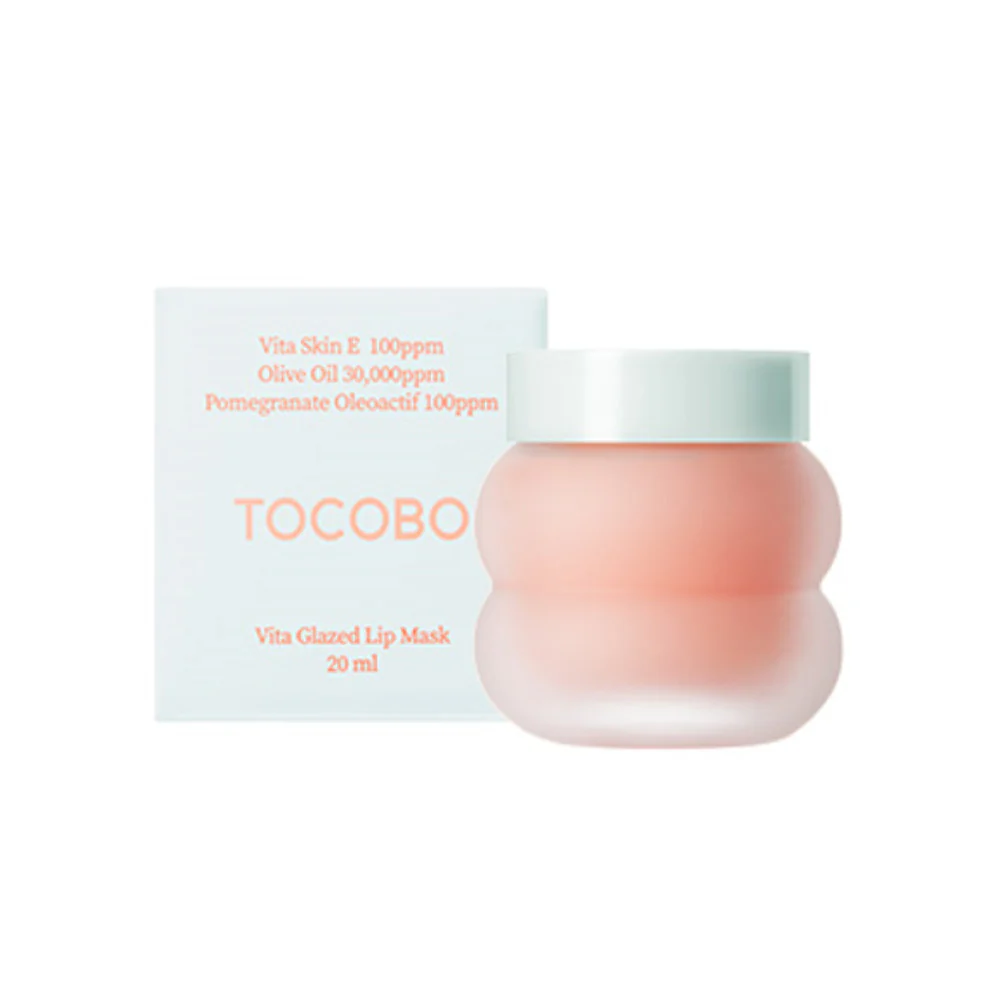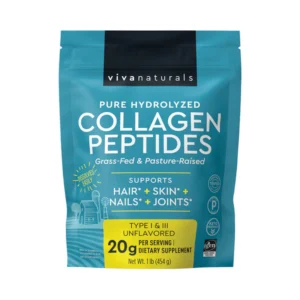Table of Contents
ToggleIntroduction:
As the leaves change, so should your skincare routine. Autumn brings a shift in weather, which can affect your skin’s health. The cooler, drier air can lead to dryness and irritation. It’s essential to adapt your skincare routine to these changes. This article will guide you through the transition, providing essential autumn skincare tips.
We’ll delve into the science of skin changes during autumn. Understanding these changes can help you better care for your skin. We’ll also discuss common autumn skin concerns and how to address them.
Transitioning your skincare routine from summer to autumn is crucial. We’ll provide tips on how to make this transition smoothly. We’ll also guide you in choosing the right products for your autumn skincare routine.
We’ll share essential autumn skincare tips, from moisturization to sun protection. We’ll also discuss advanced skincare strategies, including the use of serums and retinoids. Lifestyle adjustments can also improve your skin’s health during autumn.
We’ll explore the role of diet, hydration, exercise, and sleep in maintaining healthy skin. We’ll also provide tips on managing your indoor climate for optimal skin health.
Understanding Autumn Skin Changes
Autumn brings a noticeable shift in weather. This shift can have a significant impact on your skin’s health and appearance.
As temperatures drop, the air becomes cooler and drier. This climate change can affect your skin in several ways. Understanding these changes is the first step towards effective autumn skincare.
The Impact of Cooler, Drier Weather
Cooler, drier air can strip your skin of its natural moisture. This can lead to dryness, flakiness, and a rough texture. It’s essential to counteract these effects with a suitable autumn skincare routine.
The decrease in humidity can also affect your skin’s barrier function. This barrier helps keep moisture in and harmful substances out. When it’s compromised, your skin can become more susceptible to irritation and sensitivity.
Indoor heating, often used during autumn, can further dry out your skin. It can exacerbate dryness and irritation, leading to discomfort. It’s crucial to manage your indoor climate to prevent these issues.
The change in weather can also affect your skin’s oil production. Some people may experience increased oiliness, while others may find their skin becoming drier. Understanding your skin’s response to the weather change can help you adjust your skincare routine accordingly.
Common Autumn Skin Concerns
Autumn can bring several skin concerns to the forefront. Dryness and irritation are among the most common issues. These can result in a dull complexion and uncomfortable tightness.
Increased sensitivity is another common autumn skin concern. As the skin’s barrier function is compromised, it can become more reactive. This can lead to redness, itching, and discomfort.
For those with existing skin conditions, autumn can be a challenging time. Conditions like eczema and psoriasis can worsen due to the drier air. It’s important to manage these conditions proactively during this season.
Finally, the change in weather can lead to changes in your skin’s texture and appearance. You may notice increased roughness, flakiness, or uneven skin tone. Addressing these concerns should be a key part of your autumn skincare routine.
Transitioning Your Skincare Routine
As the seasons change, so should your skincare routine. The products and practices that work well for your skin in summer may not be as effective in autumn.
Transitioning your skincare routine can help address the unique challenges that autumn brings. It can help maintain your skin’s health and appearance during this season.
The key to a successful transition is understanding your skin’s needs. This involves recognizing how your skin reacts to the changing weather and adjusting your routine accordingly.
It’s also important to remember that skincare is not a one-size-fits-all solution. What works for one person may not work for another. It’s crucial to tailor your autumn skincare routine to your specific skin type and concerns.
From Summer Glow to Autumn Care
Summer skincare often focuses on sun protection and oil control. But as we move into autumn, the focus shifts to hydration and barrier repair.
The increased dryness in autumn means that your skin may need more moisture than it did in summer. This can involve switching to a more hydrating cleanser or adding a richer moisturizer to your routine.
Exfoliation remains important in autumn, but it’s crucial to strike a balance. Over-exfoliation can strip your skin of its natural oils, leading to dryness and irritation. It’s best to opt for gentle exfoliants and to monitor your skin’s response.
Finally, don’t forget about sun protection. Even though the weather is cooler, UV rays can still cause damage. Continue to use a broad-spectrum sunscreen as part of your autumn skincare routine.
Choosing the Right Autumn Skincare Products
Choosing the right products is key to effective autumn skincare. Look for products that provide hydration and help repair your skin’s barrier.
Moisturizers with ingredients like hyaluronic acid and ceramides can be particularly beneficial. Hyaluronic acid helps retain moisture, while ceramides help strengthen your skin’s barrier.
When it comes to exfoliation, consider using products with alpha hydroxy acids (AHAs). These can help remove dead skin cells without causing excessive dryness.
Lastly, consider incorporating a serum into your routine. Serums can deliver a concentrated dose of active ingredients to your skin. Look for serums with antioxidants, which can help protect your skin from environmental damage.
Essential Autumn Skincare Tips
Autumn skincare is all about adapting to the changing weather. As the temperature drops, your skin may need extra care to stay healthy and hydrated. Here are some essential autumn skincare tips to help you navigate this season.
Firstly, remember that consistency is key. Establishing a regular skincare routine can help your skin adjust to the new season. This routine should include cleansing, toning, moisturizing, and applying sunscreen.
Secondly, listen to your skin. If you notice any changes, such as increased dryness or sensitivity, adjust your routine accordingly. It’s also a good idea to consult a dermatologist if you have any concerns.
Moisturization: Thicker Creams and Ointments
One of the most important autumn skincare tips is to moisturize regularly. As the air becomes drier, your skin may need more hydration to stay healthy.
Consider switching to a thicker cream or ointment. These products can provide a stronger barrier, helping to lock in moisture and protect your skin from the elements.
Look for products with ingredients like hyaluronic acid and ceramides. These can help retain moisture and strengthen your skin’s barrier. Remember to apply your moisturizer to damp skin to maximize its effectiveness.
Sun Protection in the Fall
Sun protection is not just for summer. Even in autumn, UV rays can cause damage to your skin. Continue to use a broad-spectrum sunscreen with an SPF of at least 30. Apply it to all exposed areas of your skin, and reapply every two hours when outdoors.
Don’t forget about your lips and the delicate skin around your eyes. Use a lip balm with SPF, and consider using a sunscreen specifically designed for the eye area.
Exfoliation: Finding the Balance
Exfoliation is an important part of any skincare routine. It helps remove dead skin cells, leaving your skin looking brighter and smoother.
However, it’s important to find the right balance. Over-exfoliation can strip your skin of its natural oils, leading to dryness and irritation.
In autumn, consider using a gentle exfoliant once or twice a week. Look for products with alpha hydroxy acids (AHAs), which can help remove dead skin cells without causing excessive dryness.
Lip and Hand Care
Your lips and hands can often be overlooked in your skincare routine. However, these areas can be particularly vulnerable to dryness in autumn.
Keep a lip balm handy and apply it regularly throughout the day. Look for products with ingredients like shea butter and vitamin E, which can help nourish and protect your lips.
For your hands, consider using a hand cream or ointment. Apply it after washing your hands, and reapply throughout the day as needed. Wearing gloves when outside can also help protect your hands from the cold and wind.

TOCOBO - Vita Glazed Lip Mask
Lips that transform overnight lip care
– Extremely hydrating vitamin lip care for healthy smooth lips
– A glowing glazed melting texture that makes you want to keep applying – It contains high moisturizing ingredients complex and delivers deep nutrition to the lip skin to provide immediate lip care effect – It’s not sticky, but it’s a soft application that melts to the temperature of the lips
Advanced Autumn Skincare Strategies
As the season changes, so should your skincare routine. Advanced autumn skincare strategies can help address specific skin concerns that may arise during this time. These strategies include the use of serums and antioxidants, retinoids, and overnight treatments and masks.
Remember, it’s important to introduce new products into your routine gradually. This can help your skin adjust and minimize the risk of irritation. Always patch-test new products before using them on your entire face.
Serums and Antioxidants
Serums are a great way to deliver powerful ingredients directly to your skin. They are typically lightweight and absorb quickly, making them a great addition to your autumn skincare routine.
Look for serums that have antioxidants. Good choices are vitamin C or E. These ingredients help protect your skin from damage. Plus, they can also brighten your complexion.
Remember to apply your serum after cleansing and toning, but before moisturizing. This can help maximize its effectiveness.
Retinoids and Autumn Skin
Retinoids are a type of vitamin A that can help improve skin texture and reduce the appearance of fine lines and wrinkles. However, they can also make your skin more sensitive to the sun.
In autumn, when the sun’s rays are less intense, it may be a good time to introduce a retinoid into your routine. Start with a low concentration and use it every other night to minimize irritation.
Always use sunscreen during the day when using a retinoid. This can help protect your skin from UV damage.
Overnight Treatments and Masks
Overnight treatments and masks can provide your skin with a boost of hydration and nutrients while you sleep. They are typically thicker than your regular moisturizer and are designed to be left on overnight.
Look for products with ingredients like hyaluronic acid, ceramides, and peptides. These can help hydrate and repair your skin.
Remember to apply your overnight treatment or mask after your regular skincare routine. This can help seal in the other products and maximize their effectiveness.
Lifestyle Adjustments for Healthier Autumn Skin
Autumn skincare is not just about the products you apply to your skin. It’s also about the lifestyle choices you make. Diet, hydration, exercise, sleep, and indoor climate can all help keep your skin healthy in autumn.
Remember, your skin is a reflection of your overall health. By taking care of your body, you’re also taking care of your skin.
Diet and Hydration
What you eat and drink can have a significant impact on your skin’s health. A balanced diet rich in fruits, vegetables, lean proteins, and healthy fats can provide your skin with the nutrients it needs to stay healthy.
Hydration is also crucial. Drinking enough water can help keep your skin hydrated from the inside out. Aim for at least eight glasses of water a day.
Remember, certain foods and drinks can dehydrate your skin. Try to limit your intake of salty foods, alcohol, and caffeine.
Recommended Collagen Peptides Products:
Viva Naturals: Bovine Collagen

Introducing Pure Hydrolyzed Collagen Peptides, sourced from grass-fed, pasture-raised bovine hide. Made with amino acids (the building blocks of protein), it can help keep your skin firm and hydrated and support your healthy hair, nails, joints, and bones.
- Types I & III
- 20 g of Collagen Peptides per serving
- Hydrolyzed for Easier Absorption
- Dissolves Quickly and Easily
- Unflavored and Virtually Tasteless
The Role of Exercise and Sleep
Regular exercise can improve your circulation, which can help nourish your skin cells. It can also help reduce stress, which can harm your skin.
Sleep is also crucial for skin health. During sleep, your body repairs and regenerates skin cells. Aim for at least seven to eight hours of sleep a night.
Remember, lack of sleep can lead to dull skin and dark circles under your eyes. Try to establish a regular sleep schedule and create a relaxing bedtime routine.
Managing Indoor Climate for Skin Health
As the weather gets cooler, we tend to spend more time indoors with the heating on. This can lead to dry, indoor air, which can dehydrate your skin.
Consider using a humidifier to add moisture to the air. This can help prevent your skin from drying out.
Remember, it’s also important to protect your skin from harsh winds and cold temperatures when you do go outside. Wear a scarf and gloves to protect your skin from the elements.
Addressing Specific Autumn Skin Concerns
Autumn can bring about specific skin concerns. These can vary depending on your skin type and any existing skin conditions you may have. It’s important to understand these concerns and how to address them to maintain healthy skin throughout the season.
Remember, everyone’s skin is unique. What works for one person may not work for another. It’s always best to consult with a dermatologist if you have any concerns about your skin.
Dry, Oily, and Combination Skin in Autumn
Dry, oily, and combination skin types each have their challenges in autumn. Dry skin can become even drier, while oily skin can experience changes in oil production. Combination skin, which is dry in some areas and oily in others, can become even more unbalanced.
For dry skin, increase your moisturization. Look for products with hyaluronic acid, which can hold up to 1,000 times its weight in water. For oily skin, continue to moisturize but choose a lighter, oil-free moisturizer. For combination skin, you may need to use different products on different areas of your face.
Remember, it’s important to adjust your skincare routine as your skin changes. What worked for you in the summer may not work for you in the autumn.
Eczema, Psoriasis, and Other Conditions
Autumn can be a challenging time for people with skin conditions like eczema and psoriasis. The cooler, drier air can cause these conditions to flare up. If you have a skin condition, it’s important to take extra care of your skin during this time.
Keep your skin moisturized and avoid triggers that can cause flare-ups. This may include certain fabrics, fragrances, and even stress. If your condition worsens, be sure to see a dermatologist.
Remember, managing a skin condition often requires a holistic approach. This includes not only skincare but also lifestyle factors like diet, stress management, and sleep.
Hyperpigmentation and Skin Aging
Autumn is a good time to address skin concerns like hyperpigmentation and skin aging. The lower intensity of the sun makes it safer to use products that make your skin more sensitive to sunlight. These include products with ingredients like retinoids and alpha hydroxy acids (AHAs).
These ingredients can help reduce hyperpigmentation and signs of aging like fine lines and wrinkles. However, they can also make your skin more sensitive to the sun. Even though the sun’s intensity is lower in autumn, it’s still important to use sunscreen when using these products.
Remember, it’s never too early or too late to start taking care of your skin. Even small changes in your skincare routine can make a big difference over time.
Autumn Beauty and Makeup Adjustments
As the season changes, so should your beauty and makeup routine. Autumn calls for adjustments not only in your skincare routine but also in the makeup products you use and how you apply them. This is to ensure that your skin remains healthy and radiant throughout the season.
Remember, makeup is not just about enhancing your features. It can also serve as an additional layer of protection for your skin. However, it’s important to choose the right products and apply them correctly to avoid causing skin issues.
Makeup for Autumn Skin Care
In autumn, your skin may be drier and more sensitive. This means you may need to switch to makeup products that are more hydrating and gentle on your skin. Look for products with moisturizing ingredients and avoid those with harsh chemicals that can dry out your skin.
When applying makeup, start with a good base. This includes a moisturizer and a primer. These products can help create a smooth canvas for your makeup and prevent it from drying out your skin. Also, consider using a setting spray to keep your makeup in place and add an extra layer of hydration.
Remember, less is more when it comes to makeup in autumn. Heavy makeup can clog your pores and lead to skin issues. Opt for a natural, fresh look that allows your skin to breathe.
Seasonal Beauty Trends
Autumn is a great time to experiment with new beauty trends. This season, consider embracing warmer, richer colors that reflect the changing leaves. Think deep reds, oranges, and browns for your lips and eyes.
Also, consider trying out new textures. Matte finishes can be drying, so consider switching to creamier textures that can help keep your skin hydrated. This can apply to your lipstick, blush, and even eyeshadow.
Remember, beauty trends are just suggestions. The most important thing is to feel comfortable and confident in your skin. So, feel free to adapt these trends to suit your personal style and skin needs.
DIY and Natural Skincare in Autumn
Autumn is the perfect time to explore DIY and natural skincare options. As the weather changes, your skin needs extra care and attention. Homemade treatments and natural ingredients can provide a gentle, effective, and cost-effective solution.
Remember, the key to successful DIY skincare is understanding your skin’s needs and choosing the right ingredients. Always do a patch test before applying any new product or ingredient to your face, even if it’s natural.
Homemade Treatments and Masks
Homemade treatments and masks can be a fun and effective part of your autumn skincare routine. They allow you to customize your skincare to your specific needs and preferences. Plus, they can be made with ingredients you likely already have in your kitchen.
For example, a simple honey and oatmeal mask can be a great way to soothe and moisturize dry skin. Honey is a natural humectant, meaning it draws moisture into the skin. Oatmeal, on the other hand, has anti-inflammatory properties that can help soothe irritation.
Remember, while homemade treatments can be beneficial, they should not replace your regular skincare routine. They should be used in addition to your daily skincare products for the best results.
Natural Ingredients and Their Benefits
Natural ingredients can be a great addition to your autumn skincare routine. They are often gentler on the skin and can provide a range of benefits. However, it’s important to choose the right ingredients for your skin type and concerns.
Aloe vera is known for its soothing and hydrating qualities. It is a great choice for dry or irritated skin. Tea tree oil can help control oil production and fight acne. This makes it a good choice for oily or acne-prone skin.
Remember, just because an ingredient is natural doesn’t mean it’s safe for all skin types. Always do your research and consult with a dermatologist if you’re unsure.
Professional Treatments and Dermatologist Advice
A good at-home skincare routine is important. However, professional treatments and advice from a dermatologist can improve your autumn skincare. They can provide personalized advice and treatments based on your skin type, concerns, and goals.
Remember, skincare is not one-size-fits-all. What works for one person may not work for another. A dermatologist can help you understand your skin better and recommend the best products and treatments for you.
When to See a Dermatologist
While minor skin issues can often be managed at home, there are times when it’s best to see a dermatologist. If you have ongoing skin problems that don’t get better with store products, it might be time to get professional help.
Persistent dryness, redness, itching, or breakouts are all signs that you should see a dermatologist. They can diagnose any underlying skin conditions and provide appropriate treatment.
Remember, early intervention is key when it comes to skin issues. The sooner you seek help, the better your chances of improving your skin health.
Professional Treatments for Autumn Skin
Professional treatments can provide a deeper level of care than at-home products alone. They can address specific skin concerns and provide immediate results. Plus, they can be customized to your skin’s needs.
For example, a hydrating facial can help replenish moisture levels in dry autumn skin. Chemical peels can help remove dead skin cells and brighten dull skin. Microdermabrasion can help improve skin texture and tone.
Remember, while professional treatments can be beneficial, they should be part of a comprehensive skincare routine. Regular at-home care is still crucial for maintaining the results of professional treatments.
Conclusion: Embracing Autumn Skincare
As we’ve explored, autumn skincare involves more than just switching your moisturizer. It’s about understanding how the change in season affects your skin and adjusting your routine accordingly. It’s about embracing the beauty of the season and reflecting it in your skincare routine.
Remember, skincare is a journey, not a destination. It’s about learning, experimenting, and finding what works best for your skin. It’s about treating your skin with care and respect, no matter the season.
Wrapping Up Your Autumn Skincare Routine
In conclusion, autumn skincare is all about hydration, protection, and gentle care. It’s about helping your skin transition smoothly from the warm, humid summer months to the cooler, drier autumn weather.
Remember, your skin is unique. What works for someone else may not work for you. Listen to your skin and adjust your routine as needed.
Final Tips and Reminders
Finally, remember that consistency is key in skincare. Stick to your autumn skincare routine and give your skin time to adjust and respond to the products.
And most importantly, enjoy the process. Skincare is not just about looking good, it’s about feeling good too. So embrace the autumn season, and let your skin reflect its beauty. Do you still need skincare tips? Read more here: How to change skincare for fall?
Affiliate Disclosure:
The links contained in this product review may result in a small commission. This goes towards supporting our research and editorial team and please know we only recommend high-quality products.
Note: This article is for informational purposes only and is not intended to diagnose, treat, or cure any disease. Always consult a healthcare professional before taking any supplement or making any changes to your diet or lifestyle.




